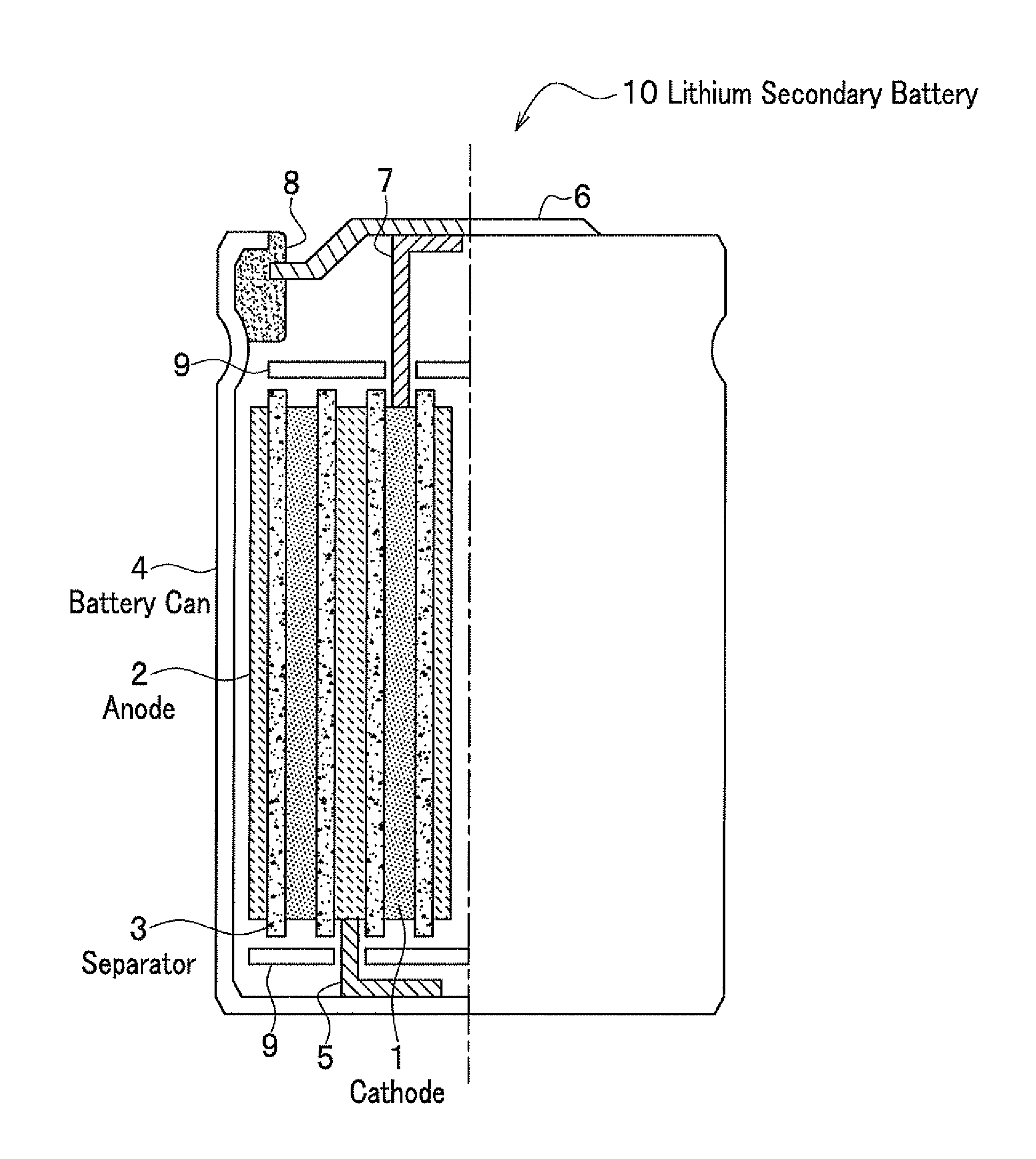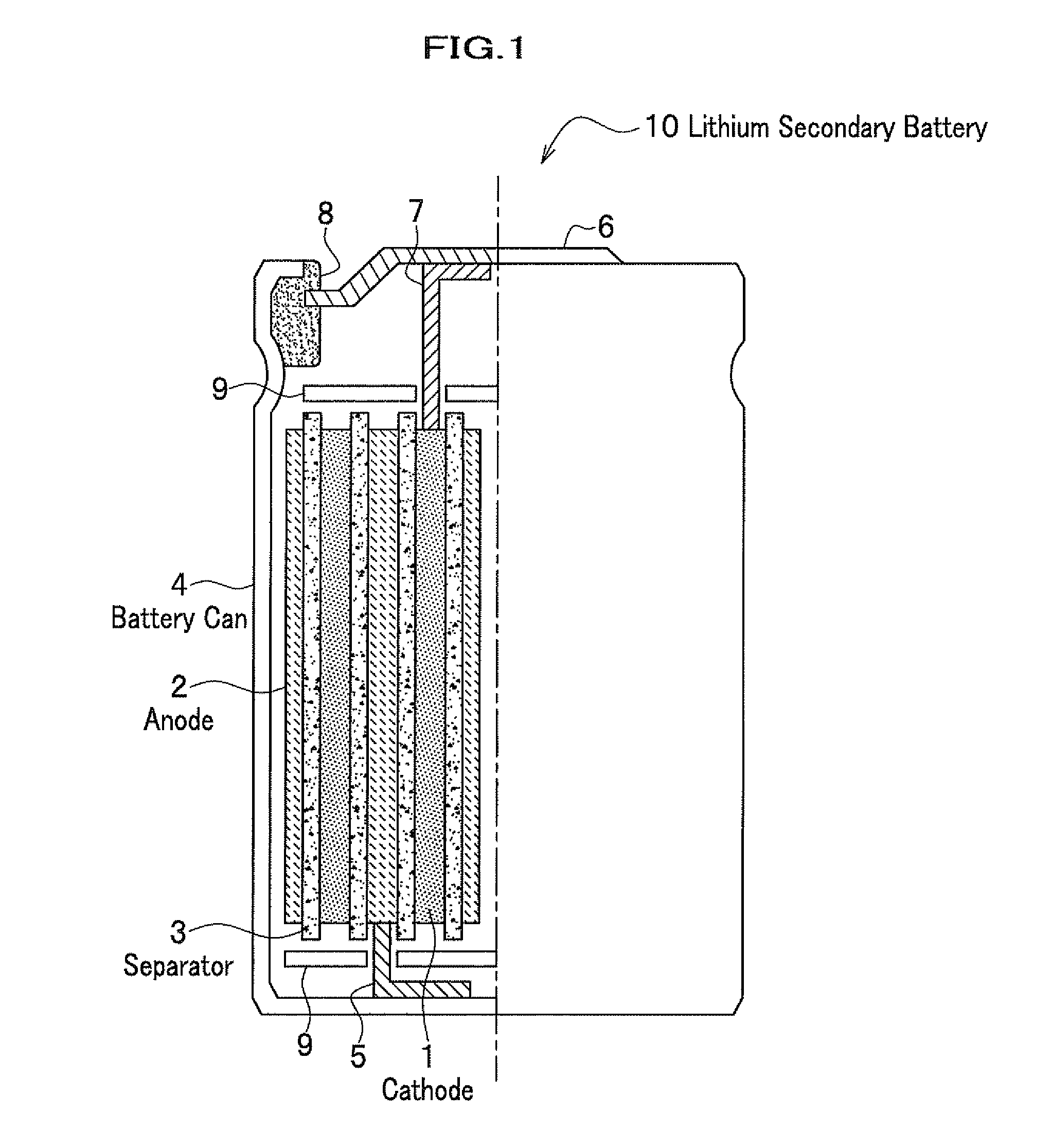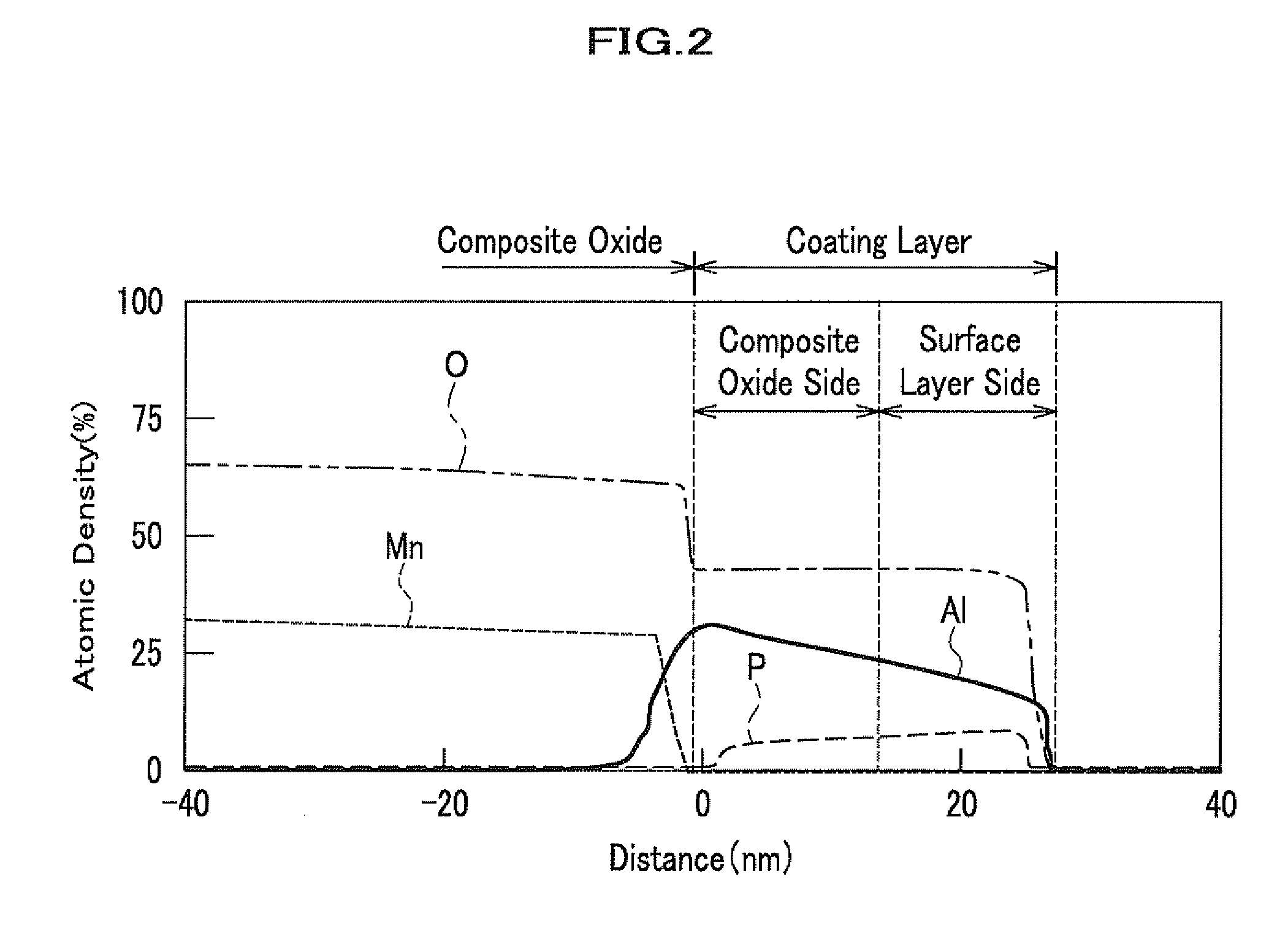Cathode material for lithium secondary battery, lithium secondary battery, and secondary battery module using the battery
a secondary battery and cathode material technology, applied in secondary cells, secondary cell servicing/maintenance, cell components, etc., can solve the problems of remarkable decrease in battery life cycle, high price, and difficult to lower the cost of the battery, and achieve excellent high temperature charge/discharge cycle profile and suppress manganese dissolution.
- Summary
- Abstract
- Description
- Claims
- Application Information
AI Technical Summary
Benefits of technology
Problems solved by technology
Method used
Image
Examples
example
Example 1
[0121]Table 1 shows the profiles of the cathode composite oxide prepared in Example 1.
[0122]
TABLE 1ThicknessAtomic Density of MCoatingCompositeSurfaceAmount ofAmountMnCompositeLiMnxN2−xO4LayerOxide SideLayer SideM Compoundof Li3PO4DissolutionOxidexNM(nm)(atom %)(atom %)(wt %)(wt %)(wt ppm)Example 11.88Li, MgAl3026210.515
[0123](Preparation of Cathode Material)
[0124]In Example 1, as a material of the composite oxide, lithium carbonate (LiCO3), manganese (II, III) oxide (Mn3O4) and magnesium oxide (MgO) were used. The compounds were weighed in the material rate of Li:Mn:Mg=1.04:1.88:0.04, and mixed by a mill in a wet milling method. After drying the powder thus obtained, the powder was placed in a high purity alumina vessel and pre-sintered at 800° C. for 12 hr in the air to increase the sintering thereof, then air-cooled. Next, the pre-sintered powder was ground, placed in a high purity alumina vessel, and sintered at 850° C. for 20 hr in the air. After air-cooled, the result...
example 2
[0159]In Example 2, a composite oxide (lithium manganese composite oxide) was prepared in the same method as in Example 1. Then, a surface modified composite oxide was prepared by conducting the thermal treatment after the surface modification under the atmosphere of nitrogen trifluoride (NF3) gas instead of the air.
[0160]In Example 2, a thickness of the coating layer was 40 nm and an average atomic density of Al at the composite oxide side was 25 atom % in the coating layer, while an average atomic density of Al at the surface layer side (or electrolyte side) was 20 atom %. The electron diffraction images of the coating compounds containing Al and P in the coating layer were identical to the diffraction image of AlF3 (ICDD, No. 44-231) and that of Li3PO4 (ICDD, No. 15-760), respectively. The ICP analysis of the composite oxide after the surface modification thereof showed that the weight rates of Al and P in the coating layer to Mn of the complex oxide were 0.4% and 0.4%, respectiv...
example 3
[0168]In Example 3, a composite oxide (lithium manganese composite oxide) was prepared in the same method as in Example 1. As the materials used for the surface modification, magnesium nitrate (Mg(NO3)2; 5.6 g) and lithium hydroxide (LiOH, 1.0 g) were used instead of aluminum nitrate (Al(NO3)3; 3.7 g) and lithium hydroxide (LiOH; 0.6 g), whereby a surface modified composite oxide was prepared.
[0169]In Example 3, a thickness of the coating layer was 30 nm and an average atomic density of Mg at the composite oxide side was 28 atom % in the coating layer, while an average atomic density of Mg at the surface layer side (or electrolyte side) was 24 atom %. The electron diffraction images of the coating compounds containing Mg and P in the coating layer were identical to the electron diffraction image of MgO (ICDD, No. 45-946) and that of Li3PO4 (ICDD, No. 15-760), respectively. The ICP analysis of the composite oxide after the surface modification thereof showed that the weight rates of ...
PUM
| Property | Measurement | Unit |
|---|---|---|
| thickness | aaaaa | aaaaa |
| thickness | aaaaa | aaaaa |
| voltage | aaaaa | aaaaa |
Abstract
Description
Claims
Application Information
 Login to View More
Login to View More - R&D
- Intellectual Property
- Life Sciences
- Materials
- Tech Scout
- Unparalleled Data Quality
- Higher Quality Content
- 60% Fewer Hallucinations
Browse by: Latest US Patents, China's latest patents, Technical Efficacy Thesaurus, Application Domain, Technology Topic, Popular Technical Reports.
© 2025 PatSnap. All rights reserved.Legal|Privacy policy|Modern Slavery Act Transparency Statement|Sitemap|About US| Contact US: help@patsnap.com



